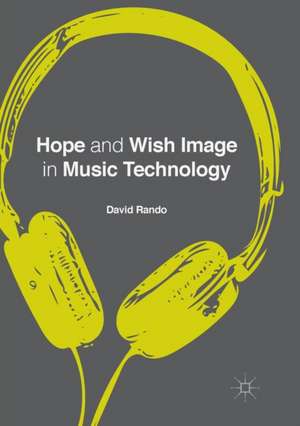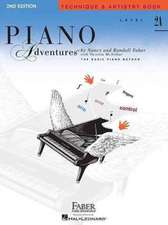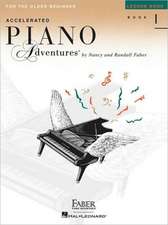Hope and Wish Image in Music Technology
Autor David P. Randoen Limba Engleză Paperback – 23 iun 2018
| Toate formatele și edițiile | Preț | Express |
|---|---|---|
| Paperback (1) | 519.81 lei 38-45 zile | |
| Springer International Publishing – 23 iun 2018 | 519.81 lei 38-45 zile | |
| Hardback (1) | 582.63 lei 6-8 săpt. | |
| Springer International Publishing – 28 noi 2016 | 582.63 lei 6-8 săpt. |
Preț: 519.81 lei
Preț vechi: 565.02 lei
-8% Nou
Puncte Express: 780
Preț estimativ în valută:
99.48€ • 103.72$ • 82.67£
99.48€ • 103.72$ • 82.67£
Carte tipărită la comandă
Livrare economică 17-24 martie
Preluare comenzi: 021 569.72.76
Specificații
ISBN-13: 9783319816579
ISBN-10: 3319816578
Pagini: 191
Ilustrații: XVI, 191 p.
Dimensiuni: 148 x 210 mm
Greutate: 0.25 kg
Ediția:Softcover reprint of the original 1st ed. 2017
Editura: Springer International Publishing
Colecția Palgrave Macmillan
Locul publicării:Cham, Switzerland
ISBN-10: 3319816578
Pagini: 191
Ilustrații: XVI, 191 p.
Dimensiuni: 148 x 210 mm
Greutate: 0.25 kg
Ediția:Softcover reprint of the original 1st ed. 2017
Editura: Springer International Publishing
Colecția Palgrave Macmillan
Locul publicării:Cham, Switzerland
Cuprins
Preface.- Introduction: Audible Hope.- Chapter 1: Wish Images and Wishful Images in Benjamin and Bloch.- Chapter 2: The Music of Wish Images: Filesharing and Utopia.- Chapter 3: The Mixtape as Wishtape: Heterotopia, Translation, and Nostalgia.- Chapter 4: The Artist and Technology: William Gaddis’s Agapē Agape, or the World’s Smallest Player Piano Playing Itself Just for You.- Chapter 5: ‘The Enemy Has Never Ceased to Be Victorious’: Anne Frank and Neutral Milk Hotel.- Chapter 6: Technology, Everyday Life, and Hope.- Conclusion: The Happy Appearance and the Wishful Tendency in Cultural Criticism.
Notă biografică
David P. Rando is Associate Professor of English at Trinity University, San Antonio, Texas, USA. He is the author of Modernist Fiction and News: Representing Experience in the Early Twentieth Century, as well as articles on modernist and contemporary fiction.
Textul de pe ultima copertă
This book proposes that new music technologies attract unconscious desires for socialism and collectivity, enabling millions of people living under capitalism to dream of repressed social alternatives. Grounded in the philosophical writings of Ernst Bloch and Walter Benjamin, the book examines file sharing technologies, streaming services, and media players, as well as their historical antecedents, such as the player piano, cassette tape, radio and compact disc, alongside interpretations of fiction, memoir, and albums. Through the concept of wish images—the unconscious hopes and desires for social alternatives that gather around new technologies—the book identifies the repressed pre- and post-capitalist urges that attend our music technologies. While these desires typically remain unconscious and tend to pass away not only unmet but also unrecognized, Hope and Wish Image in Music Technology attempts to bring wishes for social alternatives to the surface at an auspicious moment of technological transition.
Caracteristici
Analyzes varied sources ranging from mix tapes to iTunes and High Fidelity to Neutral Milk Hotel Assesses the question of the intrinsic value of music in the digital environment through cultural, business, and philosophical approaches Reaches to historical and contemporary examples of music technology and to evaluate the tensions between the "magic" of music and the "rational" limitations placed upon it by industry














